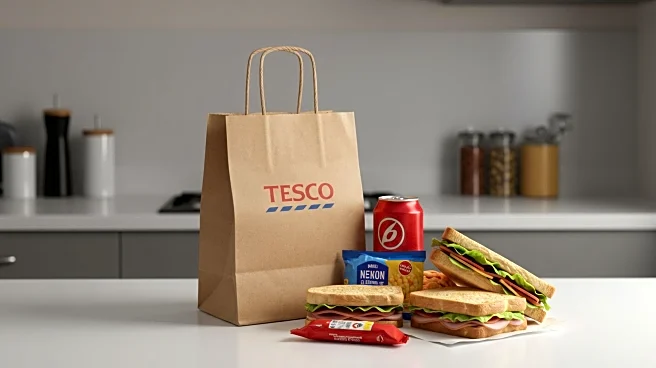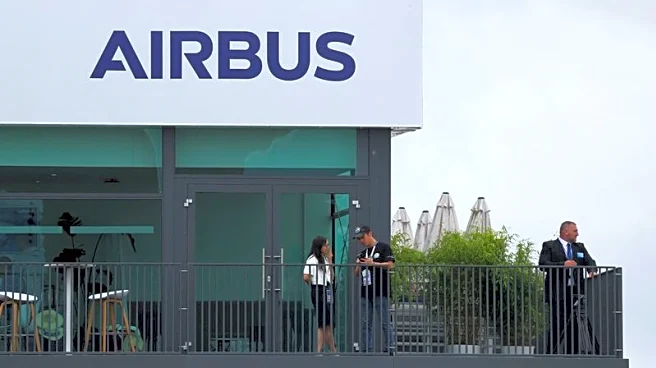What's Happening?
Tesco, a major UK supermarket chain, is set to increase the price of its meal deals starting tomorrow, August 21. The price for a meal deal with a Clubcard will rise from £3.60 to £3.85, while the price without a Clubcard will increase from £4 to £4.25. Additionally, the premium meal deal price will go up from £5 to £5.50 with a Clubcard and from £5.50 to £6 without. This follows a previous price hike in August 2024, when the cost of a meal deal with a Clubcard was raised from £3.40 to £3.60. Tesco's spokesperson emphasized the value of their meal deals, offering over 20 million possible combinations, including options like the Chicken Club Sandwich and Korean Style Chicken Dragon Rolls.
Why It's Important?
The price increase by Tesco reflects broader trends in the retail sector, where inflationary pressures are leading to higher costs for consumers. This move may impact consumer spending habits, particularly for those who rely on meal deals for affordable lunch options. As other retailers like Sainsbury's have also raised their meal deal prices recently, this could signal a shift in the market towards higher pricing structures. Consumers may need to adjust their budgets or seek alternative options, potentially affecting overall sales in the convenience food sector.
What's Next?
With the price increase set to take effect, consumers may react by exploring other lunch options or adjusting their spending habits. Tesco and other retailers will likely monitor consumer responses to these changes, which could influence future pricing strategies. Additionally, the broader economic environment, including inflation rates, will continue to play a role in shaping retail pricing decisions.
Beyond the Headlines
The price hike could have deeper implications for consumer behavior and the competitive landscape in the retail sector. As meal deals become more expensive, retailers may need to innovate or offer promotions to retain customer loyalty. This situation also highlights the ongoing challenge of balancing cost pressures with consumer expectations in a competitive market.












